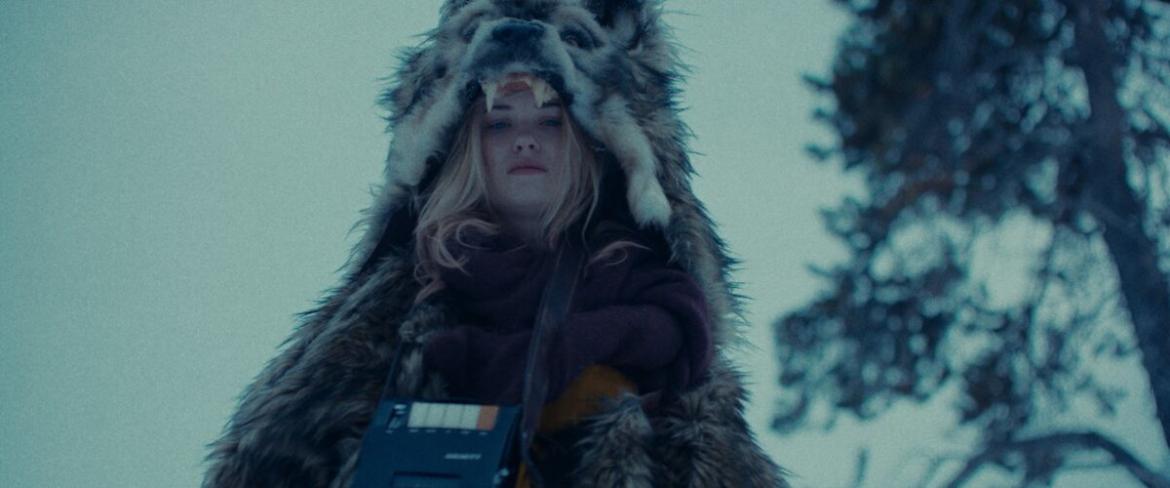
Starfish (Movie Review)
From title to opening credit design, the sci-fi horror flick Starfish has all the makings of an indie rock album from a British band with a cult following. It probably won't surprise the reader to learn that the film features an array of indie tracks which play their own part in the progression of the film's story and themes. Such is the weird and wild world of A.T. White's debut film.
Aubrey (Virginia Gardner) leaves the funeral of her best friend, Grace (Christina Masterson), to break into the deceased's apartment as a means to mourn. She falls asleep and awakens to find an unexpected winter outside and creatures lurking in the streets. A voice over a walkie talkie tells her that he and a group of people (including Grace) has discovered a signal hiding a secret language. This signal opened hidden doors that allowed creatures from another world to into our own. The only way to stop it? Finding a collection of mixtapes that Grace put together hiding segments of the code and playing them in the correct order to stop the apocalypse.
Virginia Gardner, who audiences may recognize from her most recent role in Halloween (2018), is the focus of White's film and her performance stands out in spite of the film’s ornate design and spectacle. At its most focused, Starfish offers an intimate portrait of a character grieving and coming to terms with the emotions she experiences in her exposed and vulnerable state. In fact, when the film is more focused on its central character and lingering on Gardner's acting prowess, it's at its best.
The apocalyptic setting and Lovecraftian monster movie trappings are perhaps the most straightforward and least interesting thing Starfish has going for it. Though that's not to say that the monster movie aspects are a detriment. White manages a great deal of effective visuals with a very thin budget and never loses focus of the character piece that's anchoring the entire effort. Yet, as the Starfish attempts to shoehorn in more monster mayhem or apocalyptic themes, that focus wanes ever so slightly thus making its climax seem less impactful as it otherwise might have been.
Working with limited characters and resources, White employs several techniques for expanding the narrative to varying degrees of success. Since most of the screen time is devoted to Aubrey, the film relies on voiceovers and flashbacks to weave in a few of the missing pieces. The voice coming from the walkie talkie sets Aubrey on her path and the tapes give us more of Grace's perspective on her friend’s goal. Meanwhile, Aubrey is left to interact with Grace's pet turtle and talk to herself or emote in response to a variety of hallucinations and flashbacks that are affecting her character's mental state. To complicate things more, the film switches abruptly from live action to an animated sequence where Aubrey is being chased by one of the monsters. A rock song blares over the sequence, making it almost like a music video, before dropping off and returning to the real world. It's not an unwelcome switch, though it's hard to truly define the sequence's storytelling value. Instead it comes off as a quirky artistic choice to arouse conversation on its inspired indie roots.
Starfish, like so many indie movies of its kind, is expected to think big while working from a small pool of assets to help accomplish the filmmaker's vision. White, like a skilled magician is digging deep into that pool and pulling out more than one could have imagined was stuffed inside. This is a film with performances and visuals that exceed expectations, but its thematic ambitions sometimes feel a bit too on the nose and generic. In the end Starfish is a bit like your favorite indie rock tune...a delight to hear when it pops up randomly on Pandora once in a while, but far too obscure for it to ever be in regular rotation.

